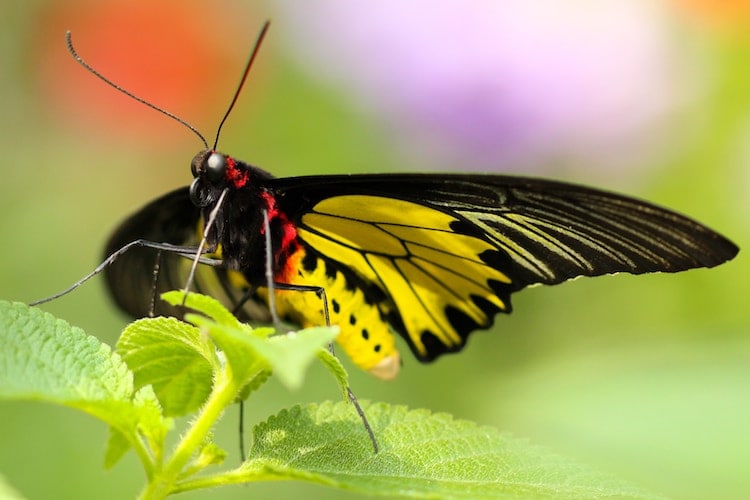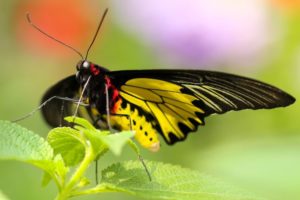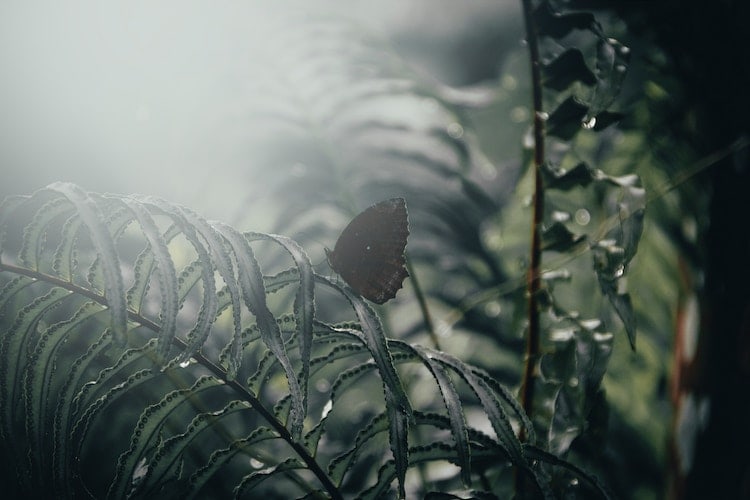Don’t let any more species of butterfly go extinct. Read this important introduction to butterfly conservation and learn how to protect butterflies.
Contents
When Did Butterfly Conservation Efforts Begin?
People first began to recognise the need for butterfly conservation in the 1960s. Racheal Carson released her seminal book, Silent Spring in 1962. The book focused on the adverse effects of modern industrial society on the environment. The title refers to the impact of chemicals, particularly pesticides used in agriculture, on the populations of living creatures; Carson could no longer hear the sounds of birds and insects from her window because they had all died from poisoning.
When the importance of insects became clear, and fear of losing them widespread, conservation efforts started all over the world. Today, conservation is a common topic of conversation among environmentalists and the general public. We have all recognised the importance of preserving nature and helping it recover from the damage inflicted upon it by us humans. And butterflies are part of nature.
Why Do We Need to Protect Butterflies?
Besides their natural beauty and life essence? Well, because butterflies, like bees, are pollinators. Without them 90% of plants would not be able to breed and reproduce. Butterflies can fly much further than bees, thus ensuring a wider spread of pollen, which helps to increase genetic diversity among plants. On top of this, butterflies are an important link in the food chain, providing sustenance to many predators, particularly birds and bats, who in turn have their own special roles to play in the ecosystem.
How Can We Protect Butterflies?
There are several specific ways to support butterflies. Alongside following the suggestions below, it is important to evaluate the way we humans relate to the world around us; we share this planet with billions upon billions of other organisms and should treat them with respect and relevance on the understanding that we are all connected and dependent on one another. With that in mind, here are a few practical steps you can take to protect butterflies and to help them flourish:
Support Butterfly Conservation Organisations
Firstly, you can support big organisations such as Butterfly Conservation or the North American Butterfly Association. These organisations can use your financial support to spread awareness of the need to conserve butterflies and their habitats, and to run their own protection schemes. Both organisations also play a vital role recording and tracking butterfly numbers. Without this information we cannot know whether or not our conservation efforts are paying off.
Create Your Own Butterfly Garden
If you own a garden, no matter what size it might be, you can support butterfly conservation by making your garden more butterfly friendly. Your first step is to find out which butterflies are present in your area. Knowing this you can select the appropriate flowers for your region’s butterfly species.
Plant the flowers in groups, with the largest plants at the back (nearest the wall or fence – if you have one). This will allow the butterflies to spot the flowers they want to feed from and prevent them from having to search for too long. It can be nice to place the garden in a position from which it can be viewed from the house. Not only will this provide you with enjoyment, it will also allow you to count your butterflies and identify species – both important aspects of butterfly conservation.
Along with flowers, it’s important to include species of plant where butterflies can lay their eggs. These include vegetable plants and herbs. Butterflies will attach their eggs to the stems, which provide food to the larvae when they hatch.
Finally, it is important to go organic! Butterflies hate unnatural chemicals in the garden. They are poison to beautiful butterflies, don’t use them. Pesticides, insecticides, herbicides, and other chemicals are all dangerous for butterflies. Butterflies are insects, so don’t use anything that kills or harms insects or their habitat.
For those of you based in North America, the NABA provides this helpful map, each point links to a PDF guide that tells you which flowers are most beneficial to butterflies in your area.
Prevent the Destruction of Wildlife Habitats and Fight Against Industrial Agriculture
Thirdly, you can organise with your friends to encourage others to protect butterflies and to fight against local building and development projects that threaten butterfly habitats. You could also fight against industrial agriculture, which uses dangerous chemicals that harm all insects including butterflies. Fight them by buying local, organic food and by pushing local farmers to switch to organic production and ask them to leave hedgerows intact and to allow small plots of land to be ‘rewilded’ for the use of insects and other wild life.
Protect Butterflies
Having read this introduction you are now ready to start protecting butterflies. Good luck and thank you for reading.


